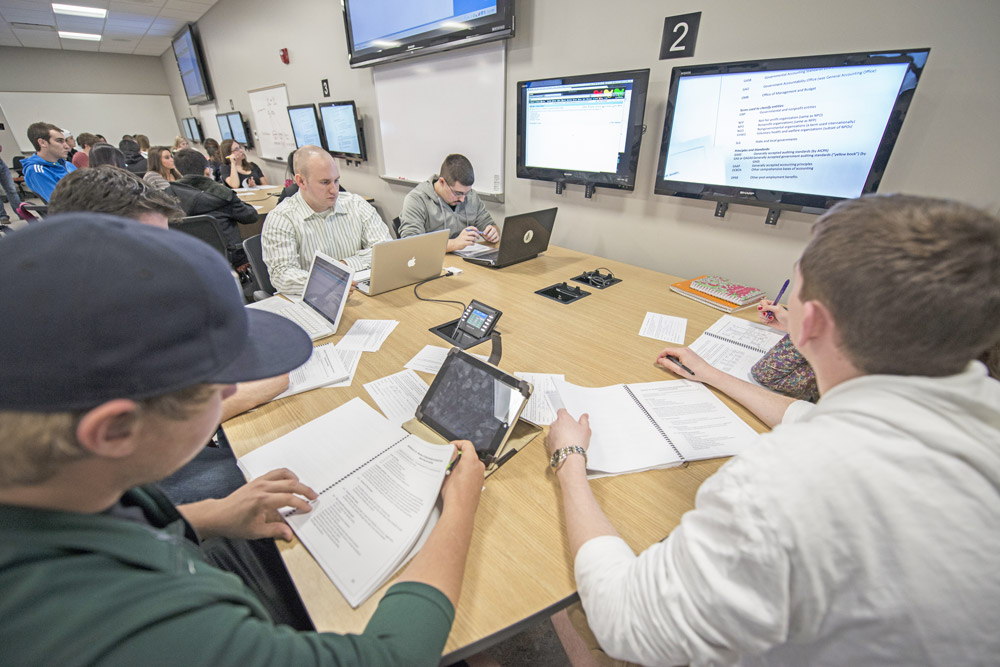Clearly defined and explained learning objectives enable students to focus their learning activities.
The MSU Code of Teaching Responsibility requires instructors to inform students of the course content and instructional objectives at the beginning of each semester.
This can be done through:
- Module-based or weekly learning objectives
- Formatted narratives, bulleted lists, or charts
- Listed steps to meeting objectives
- Indicated learning activities, resources, assignments, and assessments to support objectives
If you’re unsure what to write as your objectives, start with determining your final assessment to better understand what and how you want your students to learn.
Learning Activities
Learning activities should promote the achievement of any stated objectives and learning outcomes. Below are some examples matching objectives with related learning activities.
Objective: Apply adjustment psychology to one’s own circumstance
Activities: Simulations and discussions of application, multiple choice test from content facts
Objective: Solve accounting problems
Activities: Solving simple problems, testing on complex problems
Objective: Identify specific anatomical features useful for athletic trainers
Activities: Identifying anatomical parts on each other, labeling diagrams, and applying knowledge to common injuries
Some enlivening techniques activities to encourage interaction include:
- Ice breakers to foster group familiarity and encourage involvement.
- Engagement questions to introduce a topic or stimulate thoughts and discussion.
- Treasure hunts to cover key information, enrich the course content, or introduce external resources.
- Embedded questions to prompt reflection and receive immediate feedback.
- Case studies (minutes to weeks) to illustrate a concept or mental model.
- Games and simulations to formulate hypotheses, vary parameters, and observe outcomes.
- Student contributions to stimulate discussions and collaborate in teams.
- Role playing or debates to construct arguments and view situations or concepts from different perspectives.
Assessments
The types of assessment selected should measure the stated learning objectives and be consistent with course activities and resources.
Assessment strategies should use established ways to measure effective learning and assess student progress by reference to stated learning objectives. Below are some examples matching objectives with assessments.
Objective: Demonstrate critical thinking skills
Assessment: Problem analysis
Objective: Test vocabulary knowledge
Assessment: Multiple choice test
Objective: Assess writing skills
Assessment: Write a composition
Theoretical Approaches
Behavioral, cognitive, and constructivist are the common three theoretical approaches to learning objectives.
Behavioral objectives identify measurable, observable student behavior. They specify:
- The conditions under which behavior will be performed
- Student behavior
- The acceptable level or criteria for success
Cognitive objectives are broader and less measurable, and may be better as course goals. Bloom’s taxonomy of cognition (1956, 2001) is often used to generate objectives and includes:
- Knowledge (remember and recall)
- Comprehension (understanding)
- Application (use of concept in a new situation)
- Analysis (break something down into its parts and interpret)
- Synthesis (generate something new by applying the ideas)
- Evaluation (make judgements about value, appropriateness, or other attributes)
Constructivist objectives are broad engaging students as active learners constructing their own knowledge and beliefs within a content domain. Starting objectives include:
- Consider your personal history of learning experiences
- Explore and react to new theories and examples of teaching and learning
- Reconsider your original beliefs
- Form teams, plan, and develop real world learning objects for a client
- Justify your choices based on the principles learned


